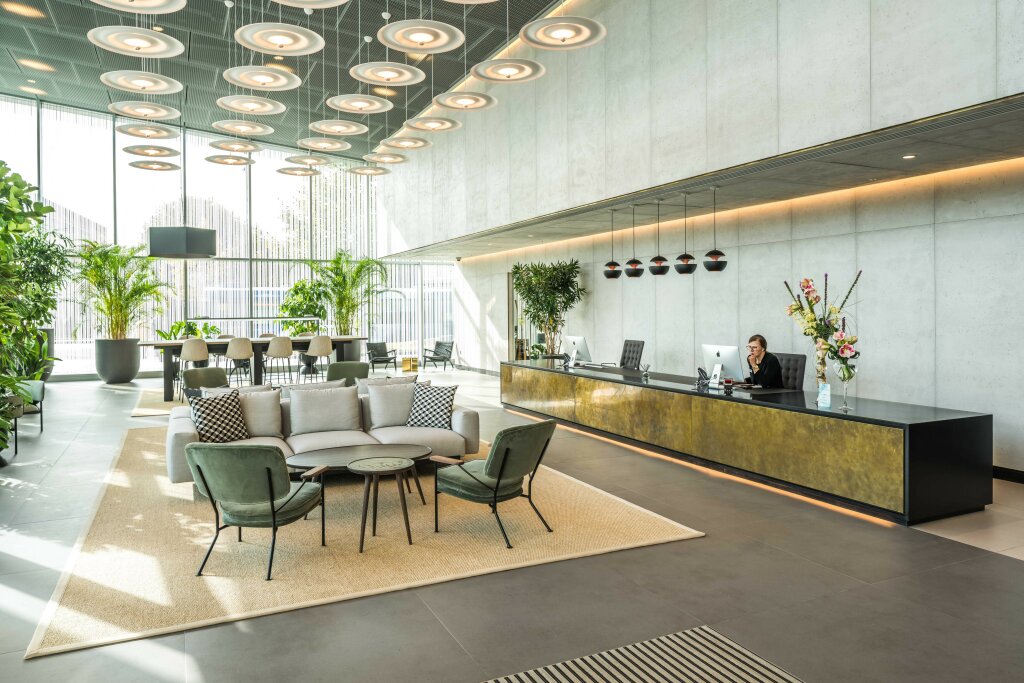National Stress Awareness Day, which takes place today (1st November), is particularly relevant this year given the context of the increasing pressure organisations are putting on staff to return to the office.
For example, ministers continue to try and curb civil servants working from home while even tech firms such as Zoom and Amazon, which benefitted from the pandemic and home working, are now limiting the practice. Adding to this backdrop are the ongoing shortages of skilled staff and the growing demand for better work-life balance, meaning that well-designed and appealing workplaces are set to become even more important and have a crucial role in reducing stress amongst employees.
Although working from home has its place, particularly for those with long commutes, our experience with enforced lockdowns has shone a light on its limitations. From feelings of isolation, to noisy and cramped bedroom offices and issues of junior team members missing valuable, casual day-to-day contact and mentoring, the list of negatives is long. This has meant a hybrid model of working has been adopted in most places: however, an increasing number of companies are insisting on a full working week in the office.
“There is increasing evidence that office design has an impact on wellness and reducing stress, and ultimately how people perform in the workplace.
”
Light and airy workspaces make us feel better. Natural light is better for eyesight and a study by the Department of Design and Environmental Analysis at Cornell University revealed that employees sitting within 10 feet of a window reported an 84% reduction in the symptoms of eyestrain. High ceiling heights were found to boost abstract thinking, according to research by the University of Minnesota, while good office ventilation and plenty of fresh air boosts productivity by 11%, according to research by the Green Building Council.
At The Future Works, our 100,000 sq ft office building in Slough, we have prioritised this. The building has a 3,000 sq ft communal roof terrace and was the first office building in the UK to achieve a Platinum AirScore for its indoor air quality, with live data on air quality (as well as energy and water usage) displayed on screens throughout the building for occupiers to view. Being surrounded by nature and plants has also been shown to have stress-busting properties. Increasingly, high-quality new office developments are incorporating biophilic design features such as green walls and roofs, which help reduce the heat island effect in urban areas, indoor plants that help lower CO2 levels, and outdoor areas such as the 12,329 sq ft of landscaped outdoor terraces at The Kensington Building. Such spaces offer an ideal place to work outside, take a break or hold summer events - enabling higher productivity and a better quality of work- life.
Increased physical activity is also linked to improved wellbeing. One way to enable this is to promote active travel by providing changing, shower and secure cycle storage facilities for cycle commuters. At The Kensington Building, we have put the needs of active commuters front and centre, with a dedicated entrance for cyclists and runners into the 165 ground-floor cycle parking spaces and bicycle repair station, and then on to the luxury changing facilities.
An increasing number of new offices also have gym facilities on their premises or close by, making it easier for occupants to bookend their day with exercise, or to fit a workout into their lunch break.
Mental health is just as important as physical health for our wellbeing. Key to mental wellbeing is social interaction and the building's location and amenities make a major difference. Office developments that have spaces that promote socialising with features such as cafes and roof terraces are popular with occupiers and staff alike. This also extends to neighbourhoods. Office buildings in well- rounded locations with a vibrant cultural offering provide plenty of opportunities for lunch breaks or after-work team bonding and networking. The increased popularity of areas like Farringdon, Kensington and the West End with occupiers post-pandemic looks set to continue.
Returning to the office needn't be detrimental to our stress levels. Well-designed, attractive office buildings in pleasant, easy-to-reach locations are an important ingredient for boosting wellbeing and work-life success. After all, we all need real world social interaction, and we achieve the best when we collaborate.
